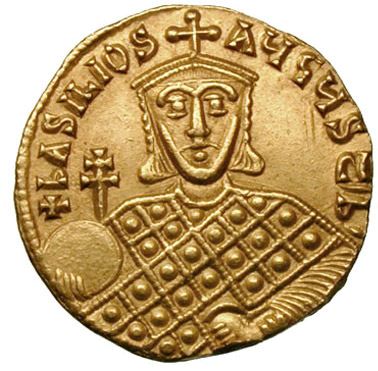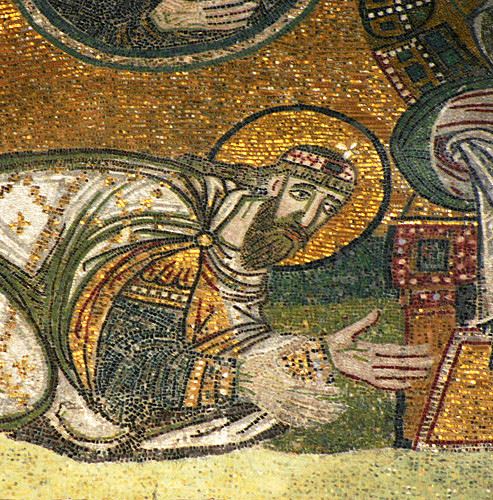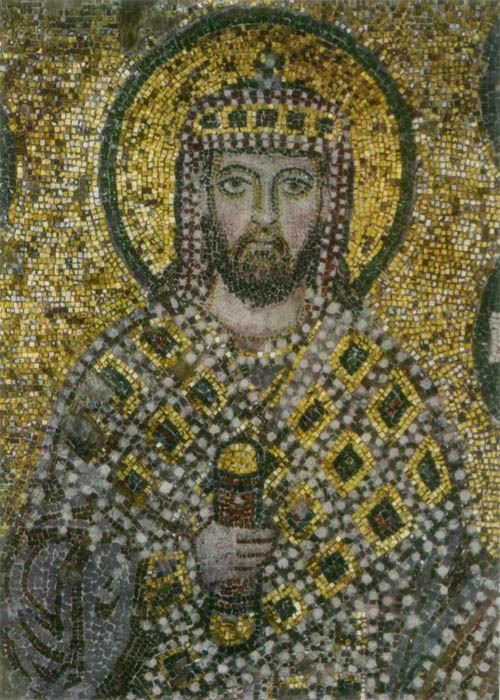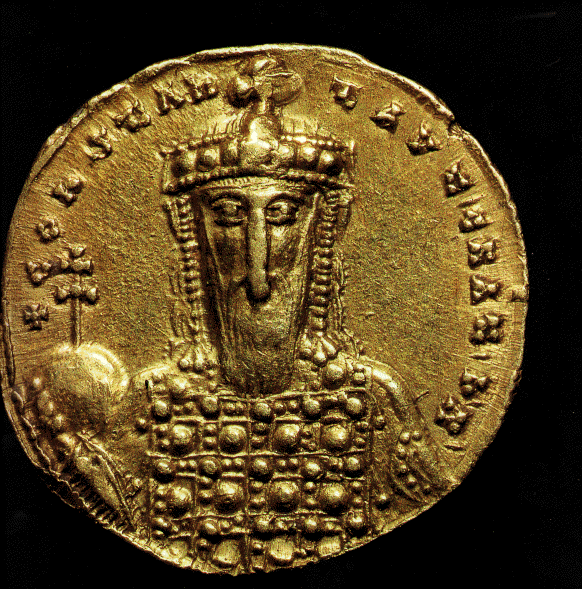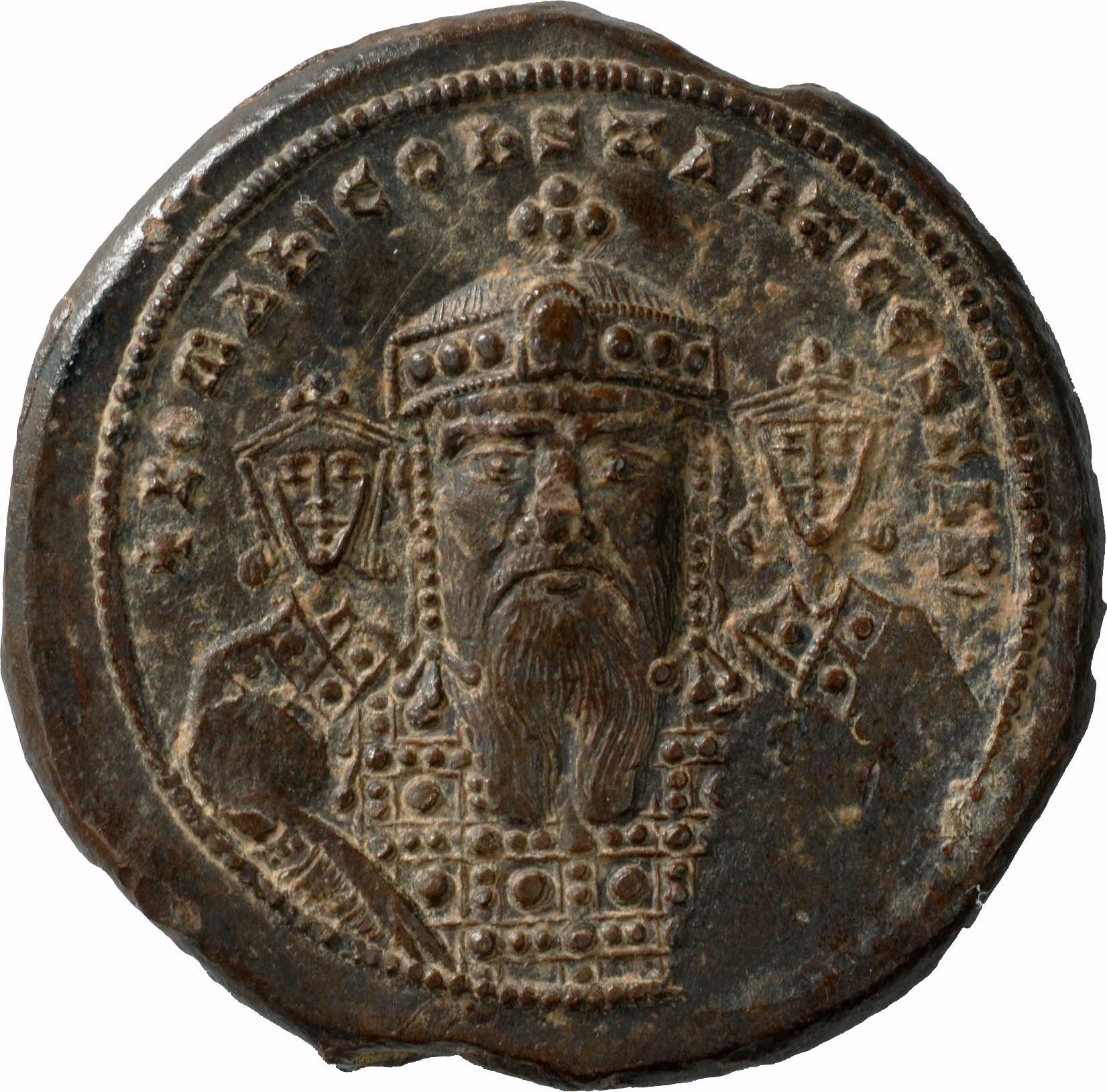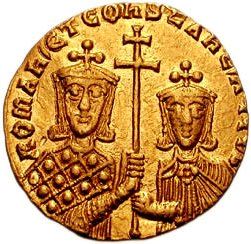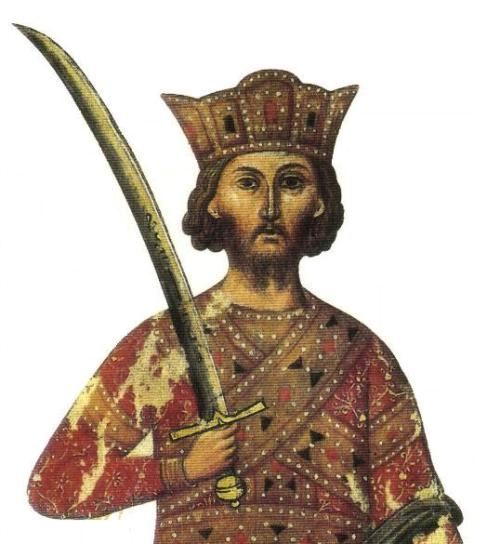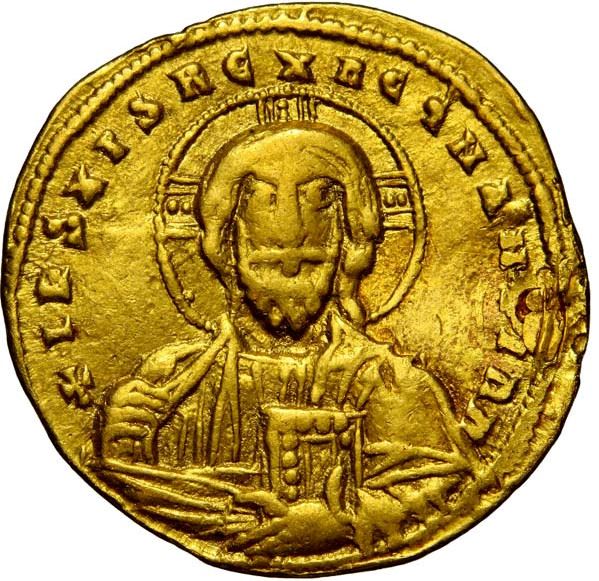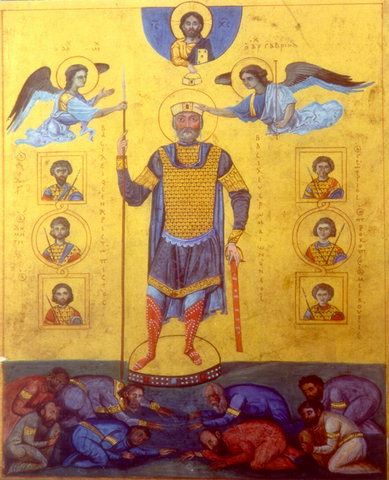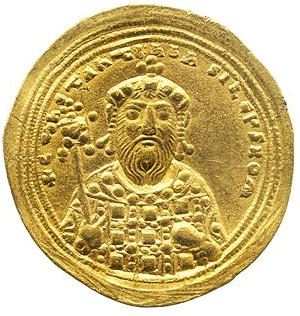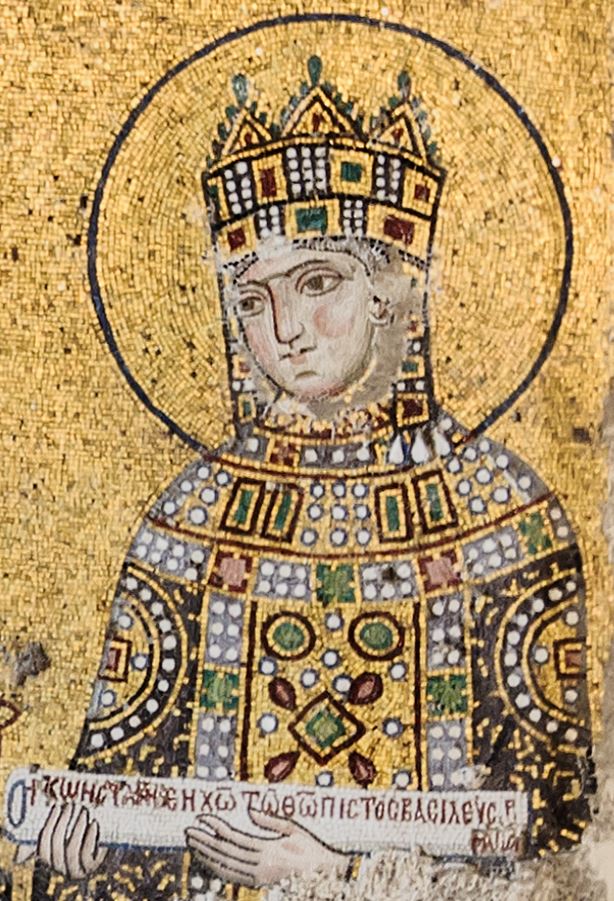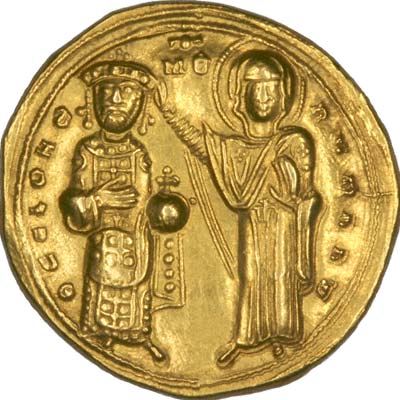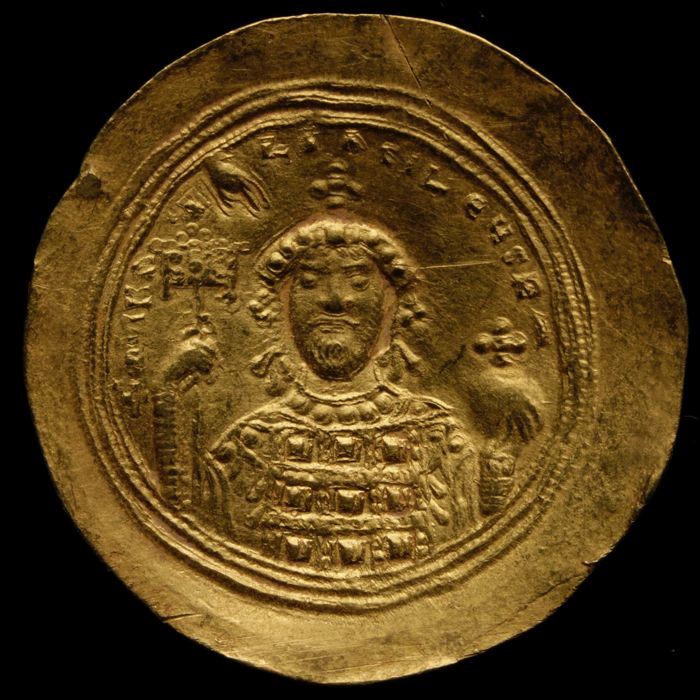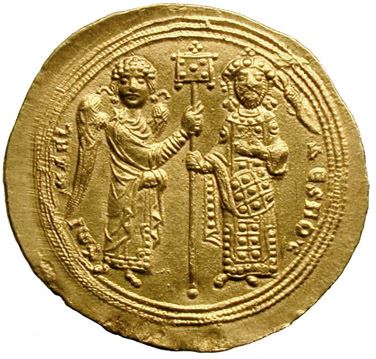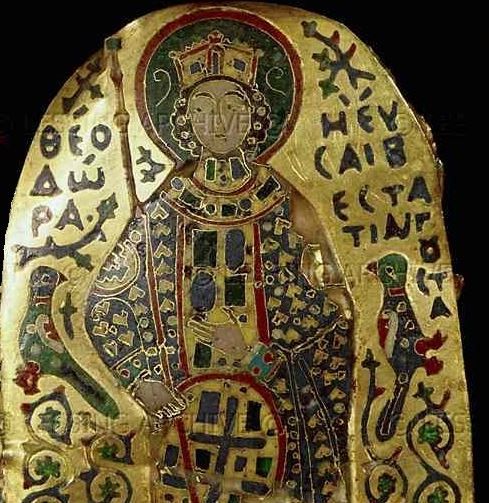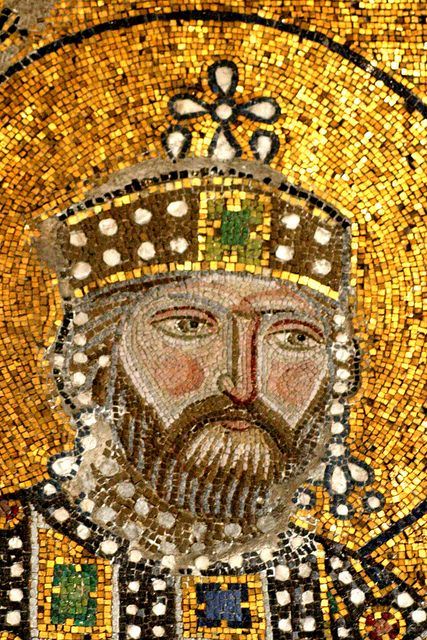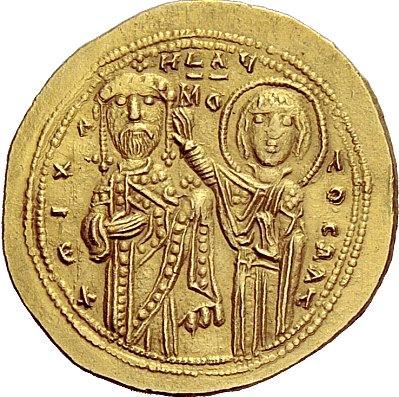From 867 to 1056, the Empire was ruled by the Macedonian dynasty – which included some of the most capable emperors in Byzantine history. It is seen as a period of revival and resurgence, and the empire moved from defence to offence, reconquering lost territory. It was also characterised by a cultural revival in spheres such as philosophy and the arts.
The iconoclast movement experienced a steep decline: this favoured its soft suppression by the emperors and the reconciliation of the religious strife that had drained the imperial resources in the previous centuries. Despite occasional tactical defeats, the administrative, legislative, cultural and economic situation continued to improve. By the end of the period, the Empire stretched form Armenia in the east, to Calabria in Southern Italy in the west.
Religiously, this era saw the relations between Greek and Slavic-speaking Eastern and Latin-speaking Western Christian traditions reach a terminal crisis. Although there was a formal declaration of institutional separation, on July 16 1054, when three papal legates entered the Hagia Sophia during Divine Liturgy on a Saturday afternoon and placed a bull of excommunication on the altar, the so-called Great Schism was a culmination of centuries of gradual separation. The Latin and Orthodox churches were now entirely separate.
The iconoclast movement experienced a steep decline: this favoured its soft suppression by the emperors and the reconciliation of the religious strife that had drained the imperial resources in the previous centuries. Despite occasional tactical defeats, the administrative, legislative, cultural and economic situation continued to improve. By the end of the period, the Empire stretched form Armenia in the east, to Calabria in Southern Italy in the west.
Religiously, this era saw the relations between Greek and Slavic-speaking Eastern and Latin-speaking Western Christian traditions reach a terminal crisis. Although there was a formal declaration of institutional separation, on July 16 1054, when three papal legates entered the Hagia Sophia during Divine Liturgy on a Saturday afternoon and placed a bull of excommunication on the altar, the so-called Great Schism was a culmination of centuries of gradual separation. The Latin and Orthodox churches were now entirely separate.
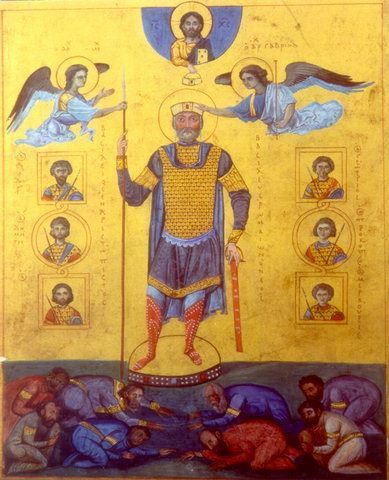
Basil I was a Byzantine Emperor who reigned from 867 to 886. Born a simple peasant in the theme of Macedonia, he rose in the Imperial court, and usurped the Imperial throne from Emperor Michael III.
Despite his humble origins, Basil showed great ability in running the affairs of state, leading to a revival of Imperial power and a renaissance of Byzantine art. It is remarkable that Basil...
Despite his humble origins, Basil showed great ability in running the affairs of state, leading to a revival of Imperial power and a renaissance of Byzantine art. It is remarkable that Basil...
Leo VI was Byzantine Emperor from 886 to 912. The second ruler of the Macedonian dynasty. He was very well-read, leading to his epithet; the Wise.
During his reign, the renaissance of letters, begun by his predecessor Basil I, continued; but the Empire also saw several military defeats in the Balkans against Bulgaria and against the Arabs in Sicily and the Aegean.
Leo VI cau...
During his reign, the renaissance of letters, begun by his predecessor Basil I, continued; but the Empire also saw several military defeats in the Balkans against Bulgaria and against the Arabs in Sicily and the Aegean.
Leo VI cau...
Alexandros or Alexander ruled as Emperor of the Byzantine Empire in 912–913. He was the third son of Emperor Basil I and Eudokia Ingerina, and the younger brother og Leo VI.
He was the first Byzantine emperor to use the term "autocrator" on coinage to celebrate the ending of his thirty-three years as co-emperor. Alexander promptly dismissed most of Leo's advisers and appointees, includi...
He was the first Byzantine emperor to use the term "autocrator" on coinage to celebrate the ending of his thirty-three years as co-emperor. Alexander promptly dismissed most of Leo's advisers and appointees, includi...
Constantine VII was the fourth Emperor of the Macedonian dynasty of the Byzantine Empire, reigning from 913 to 959. He was the son of the emperor Leo VI and his fourth wife, Zoe Karbonopsina, and the nephew of his predecessor, the emperor Alexander.
Most of his reign was dominated by co-regents: from 913 until 919 he was under the regency of his mother, while from 920 until 945 he share...
Most of his reign was dominated by co-regents: from 913 until 919 he was under the regency of his mother, while from 920 until 945 he share...
Romanos I was an Armenian who became a Byzantine naval commander and reigned as Byzantine Emperor from 920 until his deposition on December 16, 944. He ruled alongside his son in law, Constantine VII.
Romanos I Lekapenos attempted to strengthen the Byzantine Empire by seeking peace everywhere that it was possible. He was active as a legislator, promulgating a series of laws to protect s...
Romanos I Lekapenos attempted to strengthen the Byzantine Empire by seeking peace everywhere that it was possible. He was active as a legislator, promulgating a series of laws to protect s...
Romanos II was Byzantine Emperor from 959, when he succeeded his father Constantine VII, and until his sudden death in 963.
Romanos purged his father's courtiers of his enemies and replaced them with friends. To appease his bespelling wife, he excused his mother, Empress Helena, from court and forced his five sisters into convents. Nevertheless, many of Romanos' appointees were able men...
Romanos purged his father's courtiers of his enemies and replaced them with friends. To appease his bespelling wife, he excused his mother, Empress Helena, from court and forced his five sisters into convents. Nevertheless, many of Romanos' appointees were able men...
Nikephoros II was Byzantine Emperor from 963 to 969. His brilliant military exploits contributed to the resurgence of the Byzantine Empire during the 10th century.
Nikephoros' popularity was largely based on his conquests. Due to the resources he allocated to his army, Nikephoros was compelled to exercise a rigid economic policy in other departments. He retrenched court largess and curt...
Nikephoros' popularity was largely based on his conquests. Due to the resources he allocated to his army, Nikephoros was compelled to exercise a rigid economic policy in other departments. He retrenched court largess and curt...
John I was the senior Byzantine Emperor from 11 December 969 to 10 January 976. An intuitive and successful general, he strengthened the Empire and expanded its borders during his short reign.
Contemporary sources describe Tzimiskes as a rather short but well-built man, with reddish blonde hair and beard and blue eyes who was attractive to women. He seems to have joined the army at an e...
Contemporary sources describe Tzimiskes as a rather short but well-built man, with reddish blonde hair and beard and blue eyes who was attractive to women. He seems to have joined the army at an e...
Basil II was Byzantine Emperor from 10 January 976 to 15 December 1025. He was the second longest reigning emperor after his brother Constantine VIII whom he named co-emperor in 962, but outlived him by 3 years.
The early years of his long reign were dominated by civil war against powerful generals from the Anatolian aristocracy. Following their submission, Basil oversaw the stabilizat...
The early years of his long reign were dominated by civil war against powerful generals from the Anatolian aristocracy. Following their submission, Basil oversaw the stabilizat...
Constantine VIII was the Byzantine Emperor from 15 December 1025 until his death in 1028. He was the son of the Emperor Romanos II and Theophano and the younger brother of the eminent Basil II, who died childless and thus left the rule of the Byzantine Empire in his hands.
Basil died childless on 15 December 1025 and Constantine became sole emperor as Constantine VIII. He was sixty-five...
Basil died childless on 15 December 1025 and Constantine became sole emperor as Constantine VIII. He was sixty-five...
Zoe reigned as Byzantine Empress alongside her sister Theodora from April 19 to June 11, 1042. She was also enthroned as the empress consort to a series of co-rulers beginning with Romanos III in 1028 until her death in 1050 while married to Constantine IX.
Zoë was fifty when she first married, yet despite her age, she married twice more. Ironically, the most capable of her husbands was...
Zoë was fifty when she first married, yet despite her age, she married twice more. Ironically, the most capable of her husbands was...
Romanos III was Byzantine emperor from 15 November 1028 until his death in 1034. He was a Byzantine noble and senior official in Constantinople when, at the age of 60, he was forced to divorce his wife by Constantine VIII and marry the emperor's sister. Three days later the emperor died and Romanos inherited the throne.
The new emperor showed great eagerness to make his mark as a ruler,...
The new emperor showed great eagerness to make his mark as a ruler,...
Michael IV was Byzantine Emperor from 11 April 1034 to his death on 10 December 1041. He owed his elevation to his lover Empress Zoe, daughter of Emperor Constantine VIII and wife of Romanos III Argyros.
Michael IV was handsome, clever, and generous, but he was uneducated and suffered from epileptic fits. This meant he was initially very reliant upon someone to direct the government in ...
Michael IV was handsome, clever, and generous, but he was uneducated and suffered from epileptic fits. This meant he was initially very reliant upon someone to direct the government in ...
MIchael V was Byzantine emperor for four months in 1041–1042, the nephew and successor of Michael IV and the adoptive son of his wife, the Empress Zoe.
Determined to rule on his own, Michael V came into conflict with his uncle John the Orphanotrophos, whom he almost immediately banished to a monastery. Michael now reversed his uncle's decisions, recalling the nobles and courtiers who h...
Determined to rule on his own, Michael V came into conflict with his uncle John the Orphanotrophos, whom he almost immediately banished to a monastery. Michael now reversed his uncle's decisions, recalling the nobles and courtiers who h...
Theodora was a Byzantine Empress born into the Macedonian dynasty that had ruled the Byzantine Empire for almost two hundred years. She was co-empress with her sister Zoë for two months in 1042 and sole empress regnant from 11 January 1055 to 31 August 1056.
Theodora became gravely ill with an intestinal disorder in late August 1056 and died a few days later, on 31 August 1056, aged 75 ...
Theodora became gravely ill with an intestinal disorder in late August 1056 and died a few days later, on 31 August 1056, aged 75 ...
Constantine IX reigned as Byzantine emperor from June 11, 1042 to January 11, 1055. He had been chosen by the Empress Zoe as a husband and co-emperor in 1042, although he had been exiled for conspiring against her previous husband, Emperor Michael IV the Paphlagonian. They ruled together until Zoe died in 1050.
Constantine continued the purge instituted by Zoe and Theodora, removing the...
Constantine continued the purge instituted by Zoe and Theodora, removing the...
Michael VI reigned as Byzantine emperor from 1056 to 1057. Originally an elderly patrician and a member of the court bureaucracy who had served as military finance minister , Michael Bringas was chosen by the empress Theodora as her successor shortly before her death on August 31, 1056.
Although Michael managed to survive a conspiracy organized by Theodosios, a nephew of the former em...
Although Michael managed to survive a conspiracy organized by Theodosios, a nephew of the former em...

